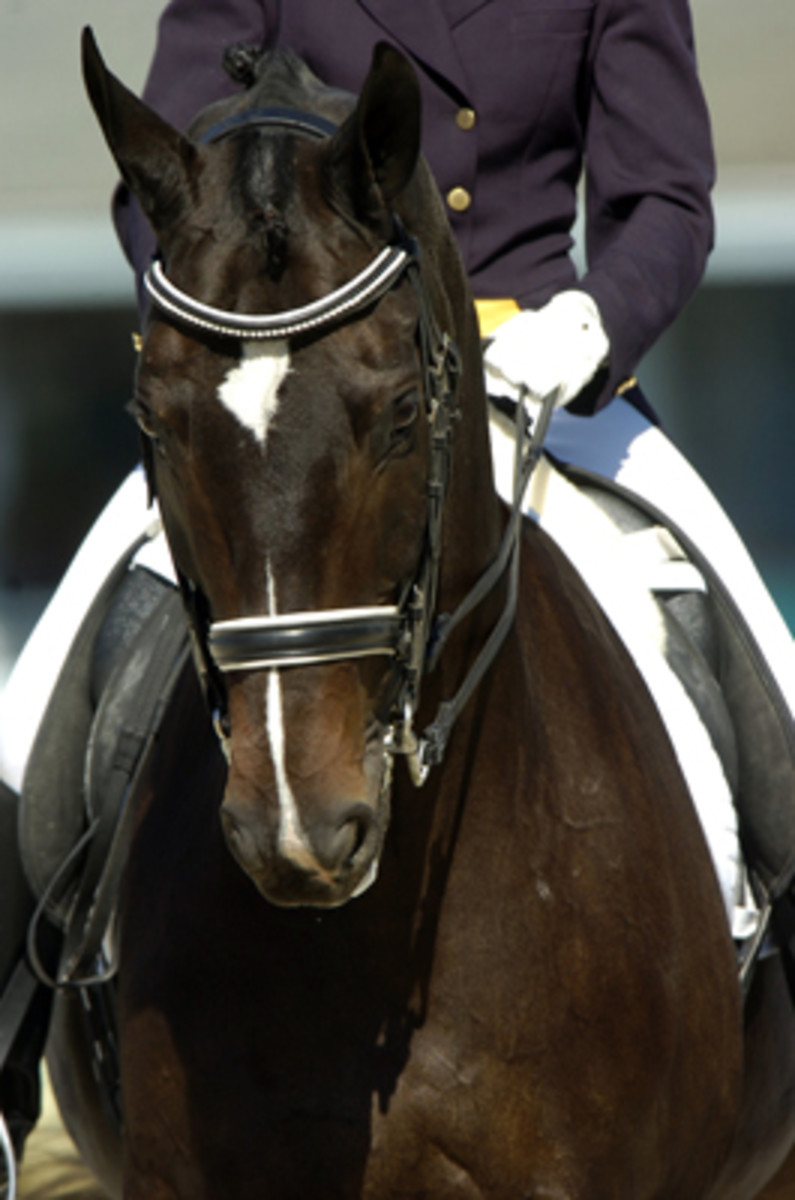Q: I have a hard time finding the right amount of contact with the outside rein when doing schooling figures or lateral work. Is there an image I could use that would help?
—Name withheld by request
A: The outside rein should always feel elastic. Imagine your outside rein was a black rubber bungee cord that keeps an elastic connection. The outside rein should feel “full.” It means that your horse is bending through his body, therefore engaging his inside hind leg. Riders then say, “The horse is truly on the outside rein.”

If you think you’ve got a correct contact with the outside rein, check if this is really the case: Ride a circle or shoulder-in and give with your inside hand (go slightly forward with your inside hand, or even let it become loopy for a few moments). If your horse is connecting correctly to the outside rein, you should be able to maintain lateral flexion with the inside leg and contact on the outside rein only. To also ensure correct lateral flexion, you should be able to see the outside corner of your horse’s inside eye. When on bending lines, the horse’s nose should travel first.
If you want to check complete self-carriage, momentarily take both hands forward on a circle or in a shoulder-in and keep your horse on your seat and legs. Your horse should maintain his lateral and vertical flexion, not changing his position, rhythm, tempo or balance.
If your horse is not connecting correctly to the outside rein, you will not be able to maintain the lateral flexion with the outside rein after yielding with the inside rein. In this case, you don’t have the right amount of contact and you will not feel the elastic rubber-bungee-cord connection. Rather, the outside rein will feel empty, dead and lifeless.
If the value on the inside rein seems greater than on the outside rein, work on driving your horse away from your inside leg into your outside rein. It will cause him to bend better in his rib cage, and he’ll eventually learn to take on the outside rein. Keep your inside leg at the girth when driving, as it controls your horse’s forehand, and keep your outside leg slightly behind the girth to control your horse’s haunches. Your inside rein asks for flexion and your outside rein has a neutral, consistent, elastic contact until you eventually feel the horse “fill out” the outside rein, becoming the black rubber bungee cord.
Don’t overbend your horse’s neck laterally. This causes the inside-leg-to-outside-rein principle not to work. Never think of bending your horse with your reins only. The bend must be through the horse’s whole body, not just the neck, and it must come from the inside-leg-to-outside-rein connection. Only when your horse is connecting from your inside leg to the outside rein will he track straighter and be able to bend better.
The inside-leg-to-outside-rein principle works only if your position remains stable (stable core) and upright. Your shoulders, hips and heels should be in alignment and you should not get in front of or behind the vertical with your seat. Don’t get discouraged if you can’t get your horse to take on the outside rein immediately. It takes time for the inside-leg-to-outside-rein principle to work properly. It’s something to work toward. Look at it as an ultimate training goal. When you’ve achieved it, you’ve achieved a milestone in dressage.
Dennis Callin is a U.S. Dressage Federation (USDF) gold medalist. He trained with the late Col. Bengt Ljungquist as well as in Germany with the late Georg Theodorescu and Herbert Rehbein in addition to Johann Hinnemann, Harry Boldt and Klaus Balkenhol. He is based in Germany.











